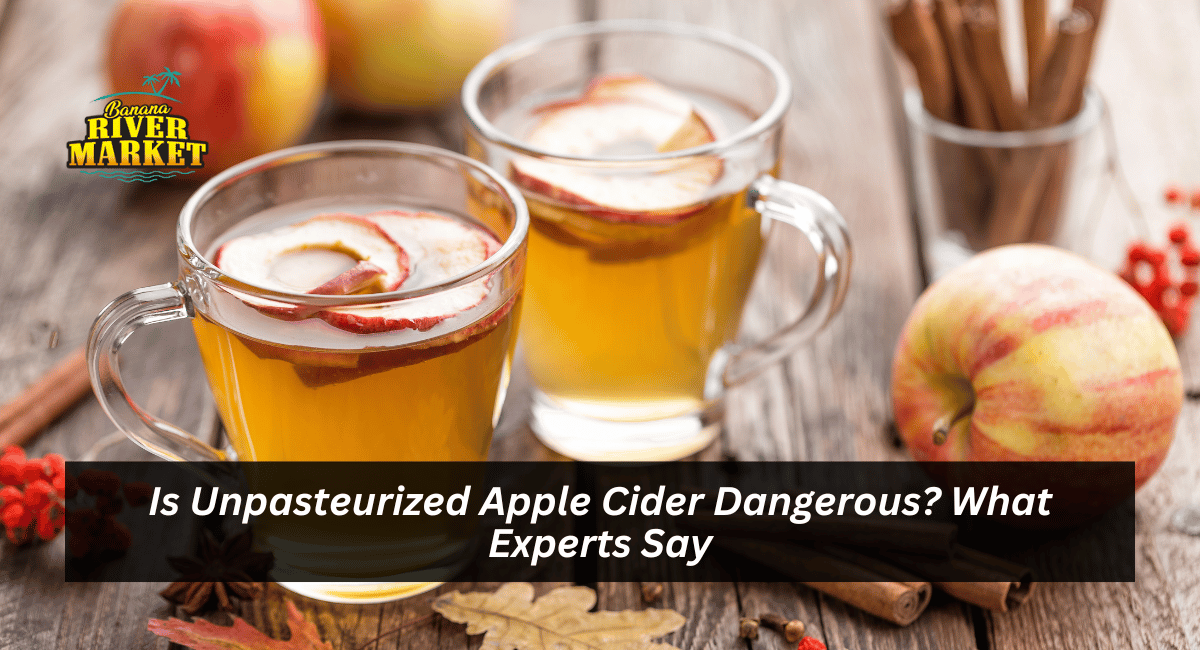As the fall season rolls in, nothing beats the comforting taste of warm apple cider. Whether enjoyed after a brisk hayride or sipped while watching the leaves change, apple cider is a beloved seasonal drink.
But if you’re considering buying it from a farm stand, you might wonder: is unpasteurized apple cider safe to drink? Here’s what you need to know.
What is Unpasteurized Apple Cider?
Apple cider is made from freshly pressed apple juice, often featuring unique or heirloom varieties. Unlike clear apple juice, which undergoes filtration, cider retains tiny apple particles, giving it a cloudy appearance and a rich flavor.
This freshness makes cider a healthier choice but also means it has a shorter shelf life.
Most commercial apple cider is pasteurized, heating the juice to kill harmful bacteria. This extends the cider’s shelf life and makes it safer to consume.
However, smaller cider producers often skip pasteurization, especially those selling at local markets or farm stands.
Since 1998, the FDA has required clear labeling for unpasteurized apple cider sold in containers. However, when you buy cider in a cup from a farm or market, there’s no legal requirement for a warning label.
To stay safe, it’s wise to inquire about the cider’s processing methods before enjoying that cup of fall goodness.
Is Unpasteurized Apple Cider Safe to Drink?
Unpasteurized apple cider can be safe to drink if it’s fresh. Here are some guidelines to keep in mind:
- Storage: Always refrigerate unpasteurized cider, even if you haven’t opened it yet.
- Usage: Try to consume it within a week. If you can’t finish it, consider freezing it in an airtight container that lasts up to a year.
Despite its freshness, the FDA advises certain groups—children, the elderly, and those with weakened immune systems—to avoid unpasteurized apple cider. Since this cider hasn’t been heat-treated, it could harbor harmful bacteria like E. coli, leading to serious illness.
How to Safely Enjoy Unpasteurized Apple Cider
If you’re concerned about the safety of unpasteurized cider, there’s a simple solution: heat it! Bringing the cider to a simmer on the stove and heating it to at least 160°F will kill any harmful bacteria.
A popular way to serve heated cider is to turn it into a warm-spiced beverage. Simply heat the cider with sugar, cinnamon, allspice, and nutmeg and serve it in cozy mugs. For an extra touch, garnish with a cinnamon stick.
Not only does this make for a delightful drink, but it also brings the warm, comforting flavors of fall right to your home.
Cooking with Apple Cider
Unpasteurized apple cider is versatile and can also be used in various recipes. From adding it to pies and donuts to using it as a base for soups, there are plenty of ways to incorporate this delicious ingredient into your fall cooking.
The Difference Between Apple Cider and Hard Cider
While discussing apple cider, let’s clarify the distinction between apple cider and hard cider. Regular apple cider is non-alcoholic, making it a great option for all ages.
On the other hand, hard cider is fermented with yeast to create an alcoholic beverage. So, if you’re looking for a family-friendly drink, stick with regular apple cider.
Conclusion
In summary, unpasteurized apple cider can be a delicious part of your fall traditions if you take the necessary precautions. Always check how the cider is processed, store it properly, and be mindful of whom you serve it.
If you’re ever in doubt, heating the cider before enjoying it is a simple way to ensure safety without sacrificing flavor.
So, whether you’re sipping it warm on a chilly evening or using it in your favorite autumn recipes, embrace the rich, sweet flavors of fresh apple cider this season. Just remember to enjoy it responsibly!

